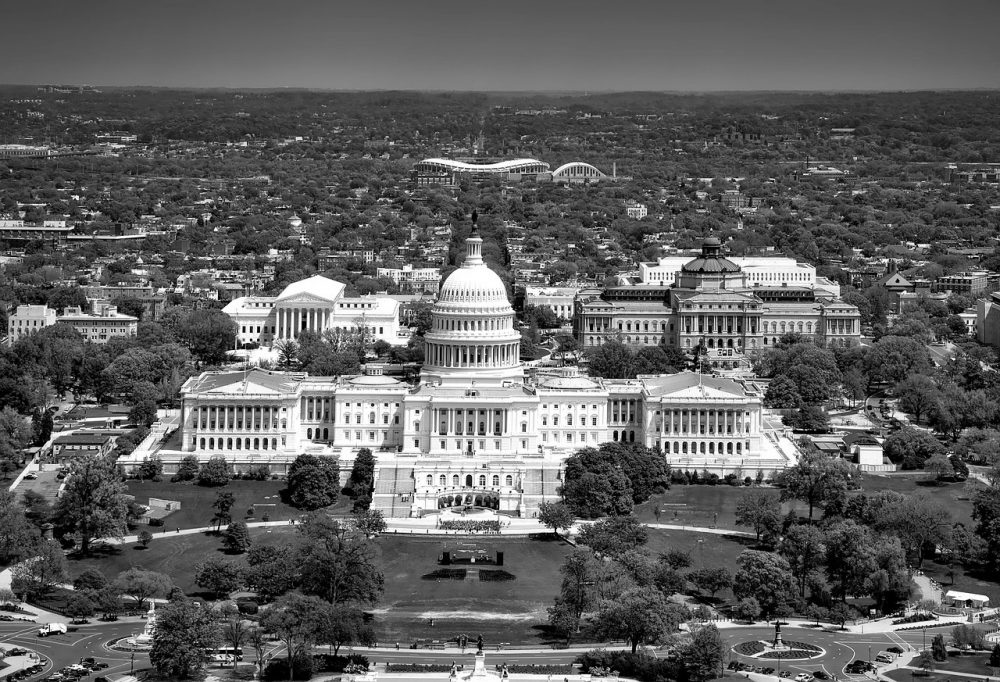“Shutdown Pinches Economic Growth.” Last night’s Wall Street Journal article led with:
A Vermont mead brewery has delayed a major expansion because the owners can’t get a business loan. A craft-burger joint in Utah has sent employees home because sales are down. And a Maryland Lyft driver has seen his weekly income fall by nearly half.
The partial federal government shutdown that became the longest on record Sunday is curtailing infrastructure projects, food-processing inspections and economic data used by Wall Street. But on a more micro level, it is showing signs of disrupting commerce as hundreds of thousands of federal workers missed out on their first payday of the closure late last week.
While the economic gashes aren’t enough to derail the recovery, now in its 10th year, they appear to be at least temporarily diminishing the vigor of an expansion that was already projected to slow in 2019. Output is now expected to grow at a 2.2% pace in the first quarter, less than an estimated 3.1% growth recorded in 2018, economists surveyed by The Wall Street Journal projected earlier this month. Those first-quarter estimates—down slightly from prior ones before the shutdown—will likely slip further as the shutdown continues. It enters its 24th day Monday.
There were no talks over the weekend, and none have been set yet for this week.
President Trump’s schedule (EST):
9:00 AM: Departs the White House;
11:55 AM: Arrives in Kenner, LA;
12:40 PM: Speaks to the American Farm Bureau Federation’s 100th Annual Convention in New Orleans, LA, live on C-SPAN2;
1:55 PM: Departs Kenner, LA;
4:25 PM: Arrives back at the White House; and
6:30 PM: Welcomes the 2018 College Football Playoff National Champion Clemson Tigers to the White House.
Federal government offices in D.C. are closed today because of snow. Congress is still expected to meet, and furloughed federal workers were staying home anyway.
The House will convene a 2 PM today with votes postponed until 6:30 PM on five bills from the Suspension Calendar, including the TANF Extension Act, H.R.430, and four bills from the Small Business Committee. The Senate will convene at 3 PM, and, at 5:30 PM, will vote again on whether to invoke cloture on the Strengthening America’s Security in the Middle East Act, S.1, which Democrats are holding up until President Trump agrees to reopen the government.
William Barr nomination to be Attorney General hearings 9:30 AM Tuesday and Wednesday, Senate Judiciary Committee.
Fighting Elder Fraud hearing 9:30 AM Wednesday, Senate Aging Committee.
Andrew Wheeler to be EPA Administrator hearing 10 AM Wednesday, Senate Environment and Public Works Committee.
Advanced Nuclear Reactors hearing 2:30 PM Wednesday, Appropriations Energy and Water Development Subcommittee.
“CBO to Delay Release of Sequestration Report.” Friday, the Congressional Budget Office reported:
In general, after a session of Congress ends, the Congressional Budget Office is required to issue a report that provides estimates of the limits (or “caps”) on discretionary budget authority and that states whether enacted legislation for the current fiscal year has exceeded those caps. However, for this year’s report to be complete and as useful to the Congress as possible, the House and Senate Budget Committees have asked CBO to delay publishing the report until it can fully account for the funding provided in all 12 annual appropriation bills.
Raising the budget caps will be a very contentious fight this spring between the House and the Senate. We’ll see if Congress can pass a budget resolution conference report this year. It failed to do so last year. Without a budget resolution, Congress usually resorts to a “deeming resolution” to allow the appropriations process to proceed as described in this 18-page October 29, 2018 Congressional Research Service report.
“Regulation And Drug Prices.” This morning’s blog by American Action Forum President Doug Holtz-Eakin leads with:
Nearly everyone expects Congress to do “something on drug prices” this year, although exactly what is far from clear. Recall, however, that the administration has already launched a broad initiative (its “Blueprint”) to address the drug pricing issue. A signature — and contentious — element of this is its proposed demonstration project on reimbursements in Part B. Perhaps lost in the end-of-year, government shutdown, New Year, New Congress noise is the fact that comments on this proposal were due to the Department of Health and Human Services (HHS) by December 31, 2018. AAF’s Tara O’Neill Hayes responded to the request with this thoughtful submission [, which concluded, “The Trump Administration has properly identified a significant problem with the international pricing of pharmaceuticals. The proposed solution, however, is misguided and likely to backfire.”].
Infrastructure: “more revenues from dedicated user fees” backed by the U.S. Chamber. Last Thursday’s statement about what Congress could get done this year by U.S. Chamber of Commerce President Tom Donahue included:
First, infrastructure. Members on both sides of the aisle have long agreed on the need to modernize the physical platform of our economy. They’ll have to make some trade-offs, but there is a real chance to finally do it. Republicans are going to have to accept that we need more revenue from dedicated user fees. Democrats are going to have to accept that private investment must be a big part of the solution. Both sides should look at this as an investment in our nation’s long-term competitiveness and future prosperity.
“TPC’s Sports Gambling Tip Sheet.” Thursday’s Tax Policy Center analysis by Richard Auxier of states’ taxes on sports gambling led with:
I don’t have an official over-under for the number of states that will legalize sports gambling in 2019, but I know it’s high. Since the Supreme Court opened the door to legal and taxable sports betting last May, six states have joined Nevada (legal since the 1940s) as homes to legal sports books. The District of Columbia approved sports betting in December and will take bets in the spring. Nearly every other state will at least discuss the issue during this year’s legislative session.
But raising large amounts of tax revenue from sports gambling is no sure bet. Here’s what policymakers should know before placing wagers.
“America Already Has a Progressive Tax System.” Friday’s Tax Foundation analysis concluded:
Policymakers at the federal level have expressed interest in raising the tax burden on high-income individuals. For instance, Representative Alexandria Ocasio-Cortez (D-NY) recently proposed raising the top marginal income tax rate to 70 percent. [How Much Revenue Would a 70% Top Tax Rate Raise? An Initial Analysis]
What these debates sometime gloss over is that the U.S. federal tax system is already progressive. Under current law, high-income taxpayers pay a larger share of the tax burden, while lower- and middle-income individuals shoulder a relatively smaller tax burden. This is true both for federal income taxes and the federal tax code overall. Furthermore, such a high-rate, narrow-base proposal is unlikely to generate a large amount of revenue.
“Fixing the Debt Could Increase Average Income by $6,000 Per Person.”Friday’s Committee for a Responsible Federal Budget blog stated:
While some recent commentators have suggested Americans stop worrying about our debt, evidence shows there is a significant upside to addressing our unsustainable fiscal situation. Recently, the Congressional Budget Office (CBO) estimated that restoring the debt-to-GDP ratio to its historic average in three decades could increase per-person income that year by $6,000, a 6.5 percent increase. Relying on pro-growth policies to fix the debt could increase income even further.
As our readers know well, federal debt is currently at a post-war record level of 78 percent of GDP and under current law is headed to 152 percent of GDP by 2048. This high and rising debt has a number of negative consequences, including higher interest payments, reduced fiscal space, rising interest rates, and an increased risk of fiscal crisis. Rising debt also “crowds out” productive private investment, as investors divert an increasing share of their savings toward purchasing government bonds.
By CBO’s estimate, every $1 increase in deficits reduces private domestic investment by 15 to 50 cents and increases foreign holdings of American assets by another 20 to 25 cents. Both of these phenomena lead to slower income growth for American workers and investors. Fortunately, there is an upside – slowing the growth of debt can actually accelerate income growth.
“We’re All To Blame For The Shutdown: That’s what the game theorists say, anyway.”Check out Friday afternoon’s provocative FiveThirtyEight application of game theory to the shutdown.
“The skills gap is fixed, because there was no skills gap.” Read another provocative blog this morning by The Washington Post, which concluded:
But what about all those companies that were saying they had a shortage of qualified applicants? Was that just a self-serving illusion? Well, according to recent research [Scroll down to “Upskilling.”] from economists Alicia Sasser Modestino, Daniel Shoag and Joshua Ballance, the answer is actually yes, much more than you might think. They found that, in the years after the crash, the more people who were unemployed, the more conditions companies put on their job openings. Now, it’s worth pointing out that this wasn’t the full story — some jobs really did require more skills (or at least credentials) than they did in the past — but it was a big part of it. In particular, the researchers estimate that increased unemployment explained about 18 to 25 percent of the increase in job requirements during this time. Although, to be fair, that might not be as cynical as it sounds. It might have just been the most rational way to sift through a stack of résumés back when there were six unemployed people for every job opening, as opposed to the fewer than one that there is today.
Not that it really matters. Whether or not business leaders were deliberately overstating the existence of the “skills gap,” they were in fact overstating it, not only saying that jobs required more skills the higher unemployment was, but also, the researchers found, that they took fewer the lower it was. So it was always a mirage. Just a convenient one.
It’s time for Washington to see through it too.







